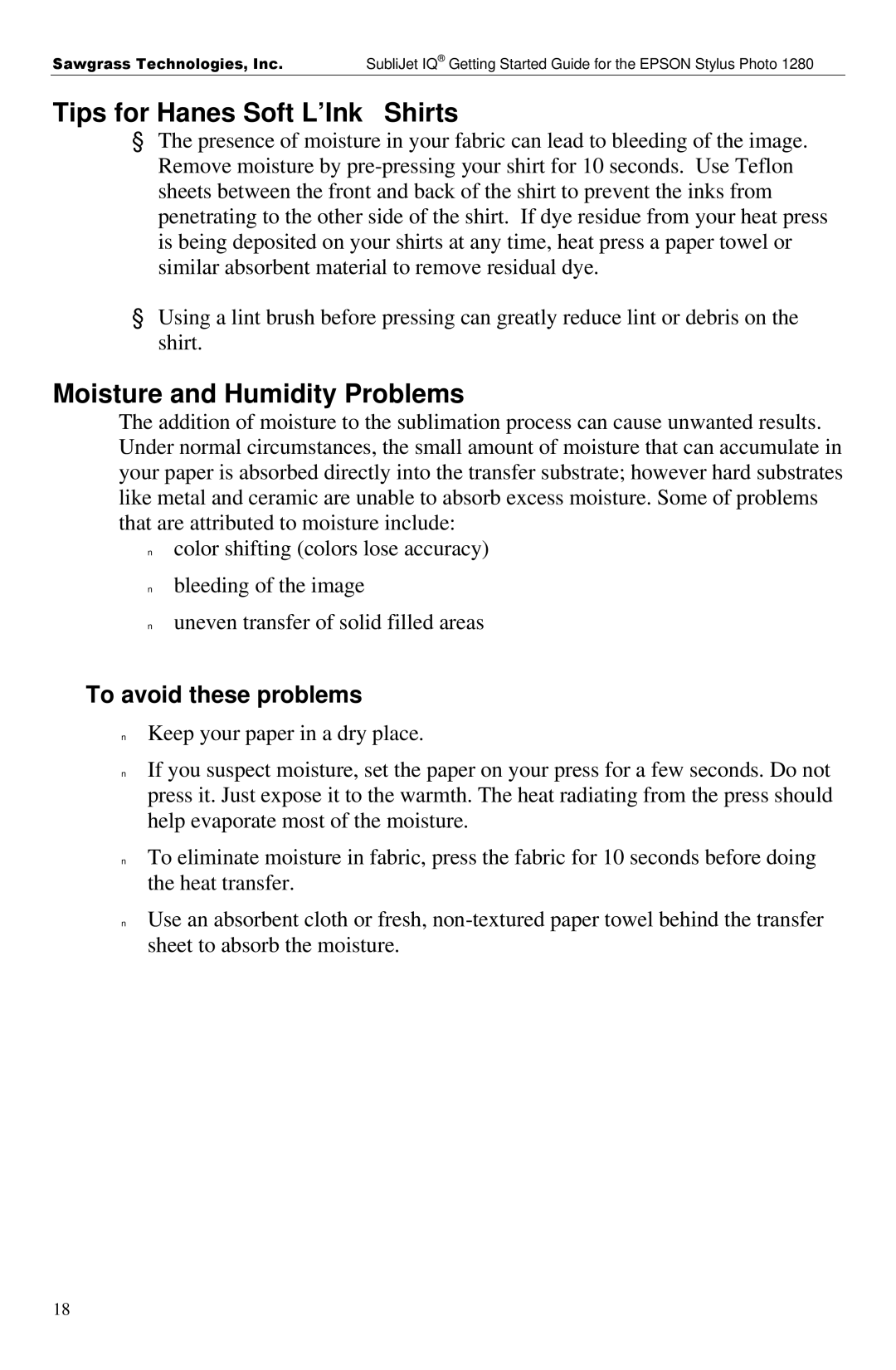Sawgrass Technologies, Inc.SubliJet IQ® Getting Started Guide for the EPSON Stylus Photo 1280
Tips for Hanes Soft L’Inkâ Shirts
§The presence of moisture in your fabric can lead to bleeding of the image. Remove moisture by
§Using a lint brush before pressing can greatly reduce lint or debris on the shirt.
Moisture and Humidity Problems
The addition of moisture to the sublimation process can cause unwanted results. Under normal circumstances, the small amount of moisture that can accumulate in your paper is absorbed directly into the transfer substrate; however hard substrates like metal and ceramic are unable to absorb excess moisture. Some of problems that are attributed to moisture include:
ncolor shifting (colors lose accuracy)
n
n
bleeding of the image
uneven transfer of solid filled areas
To avoid these problems
n
n
Keep your paper in a dry place.
If you suspect moisture, set the paper on your press for a few seconds. Do not press it. Just expose it to the warmth. The heat radiating from the press should help evaporate most of the moisture.
nTo eliminate moisture in fabric, press the fabric for 10 seconds before doing the heat transfer.
nUse an absorbent cloth or fresh,
18
